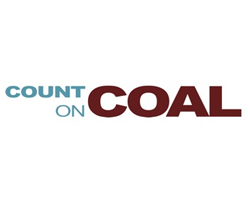
 










|
Signature Sponsor


October 17, 2018 - In 2013, the World Bank Group decided to limit financial support for coal-fueled power plants to what it deemed “rare and exceptional circumstances.” It was a decision that almost immediately made perfect the enemy of the good and, as the World Coal Association (WCA) argues in a new report, has likely proved counterproductive to achieving global emissions reduction goals.
The WCA’s report, “Reducing Emissions from Coal: A Role for the World Bank," neatly lays out the case for the World Bank to re-engage and take a hands-on role in influencing the deployment of the coal technology the world is building and will build in the future.
With 492 GW of new coal-fired capacity either planned or under construction – capacity that is likely to have a lifespan of at least 30 years – the need, and opportunity, to deploy high efficiency, low emission (HELE) coal technology can’t be overlooked. HELE plants, fitted with modern emissions control technologies that are commercially available today, offer a far smaller environmental footprint than their subcritical alternatives. As the WCA observes, much of the world’s coal fleet uses subcritical combustion technologies with efficiencies around 33 percent. Modern HELE plants have an efficiency of 45 percent. Just a one percent increase in the efficiency of a coal plant reduces carbon emissions by two to three percent.
The numbers speak for themselves: HELE technology is an important step forward to reducing emissions but it’s a step not being taken with a sizeable percentage of new coal projects. In fact, just a third (183 GW) of new coal capacity will use the most efficient plant designs.
As the WCA reports, many of the coal plants either under construction or proposed are using subcritical technology or leaning towards doing so. The reason? Initial capital costs of subcritical plants can be a third lower than their HELE alternatives. Addressing those capital costs and lowering the financing barriers to HELE deployment is precisely a space where a re-engaged World Bank can make a difference. The opportunity to influence the type of technology developers select is substantial. Consider that the technology for a full 94 GW of proposed coal capacity additions is unknown or yet to be announced.
While the World Bank, and other multilateral development banks, have historically provided a relatively small contribution to overall coal-funding, the WCA points out that World Bank participation can be significant in the viability of a project that commercial banks might view as too risky to undertake alone. Given the World Bank’s leadership role, a pragmatic policy towards funding HELE coal technology would also serve as a replicable model for commercial banks to promote best-available technology themselves.
Recognizing the role coal will continue to play in the global economy calls for energetic pragmatism to help achieve progress where it’s clearly in reach. Coal remains the workhorse of the world’s electricity needs. It’s used to generate the same share of the world’s electricity today as it did 20 years ago. The reliable, affordable and secure energy that coal provides remains attractive in first-world economies and in developing and emerging economies alike.
Multiple independent forecasts show that coal is going to continue to play a significant role in meeting the world’s energy needs for decades to come, particularly in nations tackling energy poverty and facing the challenges of industrialization, rapid urbanization and soaring energy demand. Advanced coal technology can help meet that demand while reducing the carbon intensity of power production. Engagement from the World Bank can play a key role in providing financial and technological support to transition away from subcritical coal technology and accelerate the deployment of low emission technology in its place. |
 








|
(1).png)
(1).png)